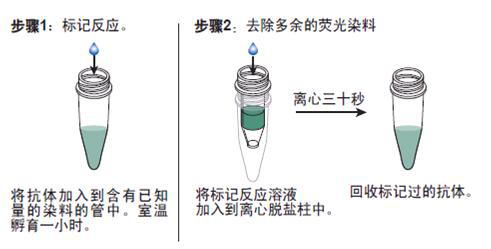
|

| 产地 | 进口、国产 |
| 品牌 | 上海莼试 |
| 保存条件 | Store at -20 °C |
| 货号 | CS11007 |
| 应用范围 | WB=1:100-500 ELISA=1:500-1000 IHC-P=1:100-500 IHC-F=1:100-500 ICC=1:100-500 IF=1:100-500 |
| CAS编号 | |
| 抗体名 | Anti-RAB3GAP1 |
| 克隆性 | |
| 靶点 | 详见说明书 |
| 适应物种 | 详见说明书 |
| 形态 | 详见说明书 |
| 宿主 | 详见说明书 |
| 亚型 | IgG |
| 标识物 | 详见说明书 |
| 浓度 | 1mg/1ml% |
| 免疫原 | KLH conjugated synthetic peptide derived from human RAB3GAP1 |
产品订购信息:
英文名称 Anti-RAB3GAP1
中文名称 RAB3-GTP酶激活蛋白催化亚单位1抗体品牌
别 名 DKFZp434A012; KIAA0066; P130; Rab3 GAP; Rab3 GAP p130; RAB3 GTPase activating protein 130 kDa subunit; Rab3 GTPase activating protein catalytic subunit; RAB3GAP; RAB3GAP130; WARBM1; RB3GP_HUMAN.


浓 度 1mg/1ml
规 格 0.2ml/200μg
抗体来源 Rabbit
克隆类型 polyclonal
交叉反应 Human, Mouse, Rat, Rabbit
产品类型 一抗
研究领域 细胞生物 发育生物学 神经生物学 G蛋白信号
蛋白分子量 predicted molecular weight: 110kDa
性 状 Lyophilized or Liquid
免 疫 原 KLH conjugated synthetic peptide derived from human RAB3GAP1
亚 型 IgG
纯化方法 affinity purified by Protein A
储 存 液 Preservative: 15mM Sodium Azide, Constituents: 1% BSA, 0.01M PBS, pH 7.4
RAB3-GTP酶激活蛋白催化亚单位1抗体品牌 产品应用 WB=1:100-500 ELISA=1:500-1000 IHC-P=1:100-500 IHC-F=1:100-500 ICC=1:100-500 IF=1:100-500
(石蜡切片需做抗原修复)
not yet tested in other applications.
optimal dilutions/concentrations should be determined by the end user.
保存条件 Store at -20 °C for one year. Avoid repeated freeze/thaw cycles. The lyophilized antibody is stable at room temperature for at least one month and for greater than a year when kept at -20°C. When reconstituted in sterile pH 7.4 0.01M PBS or diluent of antibody the antibody is stable for at least two weeks at 2-4 °C.
Important Note This product as supplied is intended for research use only, not for use in human, therapeutic or diagnostic applications.
产品介绍 Rab3 proteins are involved in regulated exocytosis of neurotransmitters and hormones. Rab 3 GAP p130, also known as Rab3 GTPase-activating protein catalytic subunit, is a 981 amino acid protein that belongs to the Rab3-GAP catalytic subunit family. Rab 3 GAP p130 converts active RAB3-GTP to the inactive form RAB3-GDP, and is required for normal eye and brain development. Defects in Rab 3 GAP p130 are the cause of Warburg micro syndrome 1 (WARBM1). WARBM1 is a severe autosomal recessive disorder characterized by developmental abnormalities of the eye and central nervous system and by microgenitalia. The Rab 3 GAP p130 protein may participate in neurodevelopmental processes such as proliferation, migration and differentiation before synapse formation, and non-synaptic vesicular release of neurotransmitters. Existing as two alternatively spliced isoforms, the Rab 3 GAP p130 gene is conserved in chimpanzee, dog, cow, mouse, chicken, zebrafish and fruit fly, and maps to human chromosome 2q21.3.
Function : RAB3GAP1 is a member of the RAB3 protein family which are implicated in regulated exocytosis of neurotransmitters and hormones. RAB3GAP, which is involved in regulation of RAB3 activity, is a heterodimeric complex consisting a 130-kD catalytic subunit and a 150-kD noncatalytic subunit. RAB3GAP specifically converts active RAB3-GTP to the inactive form RAB3-GDP (Aligianis et al., 2005 [PubMed 15696165].
Subunit : The Rab3 GTPase-activating complex is a heterodimer composed of RAB3GAP and RAB3-GAP150. The Rab3 GTPase-activating complex interacts with DMXL2
Subcellular Location : Cytoplasm. Note=In neurons, it is enriched in the synaptic soluble fraction.
Tissue Specificity : Ubiquitous.
DISEASE : Defects in RAB3GAP1 are the cause of Warburg micro syndrome type 1 (WARBM1) [MIM:600118]. A rare syndrome characterized by microcephaly, microphthalmia, microcornia, congenital cataracts, optic atrophy, cortical dysplasia, in particular corpus callosum hypoplasia, severe mental retardation, spastic diplegia, and hypogonadism.
Similarity : Belongs to the Rab3-GAP catalytic subunit family.
Database links : UniProtKB/Swiss-Prot: Q15042.3

Anti-RAR- Alpha /FITC 荧光素标记维受体-α 抗体IgGMulti-class antibodies规格: 0.2ml
Amyloid Beta 25-35( Beta-Amyloid 25-35) β淀粉样肽25-35(多肽)Multi-class antibodies规格: 1mg
瘦素受体抗体 Anti-Leptin receptor 0.2ml
SUR1 英文名称: 磺酰脲类药物受体1抗体 0.1ml
FOXL2 英文名称: 叉头蛋白L2抗体 0.1ml
Rhesus antibody Rh Phospho-PLC gamma 1/PLCG1(Tyr775) 磷酸化磷酯酶Cγ1抗体 规格 0.1ml
Amyloid Beta 25-35( Beta-Amyloid 25-35) β淀粉样肽25-35(多肽)Multi-class antibodies规格: 1mg
Anti-Phospho-PAK1 (Thr423)/PAK2 (Thr402) /FITC 荧光素标记磷酸化p21激活激酶1/2抗体IgGMulti-class antibodies规格: 0.2ml
Goat Anti-Guinea IgG 羊抗豚鼠IgG (亲和层析纯化)Multi-class antibodies规格: 1mg
γ1氨基受体α1抗体 Anti-GABA-ARα1 0.1ml
Goat Anti-rabbit IgG/Alexa Fluor 647 Alexa Fluor 647标记的羊抗兔IgG 0.1ml
FLNC 英文名称: 细丝蛋白2抗体 0.1ml
Rhesus antibody Rh Phospho-SRF (Ser103) 磷酸化生长激素释放因子抗体(血清应答因子) 规格 0.1ml
Goat Anti-Guinea IgG 羊抗豚鼠IgG (亲和层析纯化)Multi-class antibodies规格: 1mg
PDGF-BB 人血小板衍生生长因子-BBMulti-class antibodies规格: 48T
Anti-CD155/PVR 病毒受体抗体Multi-class antibodies规格: 0.2ml
Rhesus antibody Rh Ninjurin 1 神经损伤诱导蛋白1抗体 规格 0.2ml
Human chaperonin 10,CPN10 ELISA Kit 人伴侣蛋白10 96T
TAB1 英文名称: 转化生长因子β活化激酶结合蛋白1抗体 0.1ml
CELSR1 英文名称: 钙粘蛋白超家族CELSR1抗体 0.1ml
Anti-CD155/PVR 病毒受体抗体Multi-class antibodies规格: 0.2ml
产品名称货号规格用途订购
LB Broth 培养基 250g incubation media LB Broth 培养基 250g
雅致枝霉 支/瓶
最小肉汤培养基250g
AcidL-GMediumBase
十六烷基溴化铵琼脂250g用于绿脓杆菌的选择性分离培养(GB标准)
假单胞P琼脂 250(g) incubation media 假单胞P琼脂 250(g)
弯曲杆菌培养基基础 CCDA Base 250克 弯曲杆菌的分离培养
赖氨酸脱羧酶培养基5生化培养基,赖氨酸脱羧酶试验(GB、SN标准)incubationmedia赖氨酸脱羧酶培养基5生化培养基,赖氨酸脱羧酶试验(GB、SN标准)
EF-18Agar
RAB3-GTP酶激活蛋白催化亚单位1抗体品牌 GN增菌液 1000(g) incubation media GN增菌液 1000(g)
木糖-赖酸-去氧胆酸盐培养基(XLD) 250(g) incubation media 木糖-赖酸-去氧胆酸盐培养基(XLD) 250(g)
40%尿素水 5mL/支×10(g) incubation media 40%尿素水 5mL/支×10(g)
WS琼脂 250(g) incubation media WS琼脂 250(g)

抗体的生物素化标记实验要点:
1. RAB3-GTP酶激活蛋白催化亚单位1抗体品牌 如在反应混合液中有叠氮钠或游离氨基存在,会抑制标记反应。因此,蛋白质在反应前要对 0.1mol/L碳酸氢钠缓冲液或0.5mol/L硼酸缓冲液充分透析;
2.所用的NHSB及待生物素化蛋白质之间的分子比按蛋白质表面的ε-氨基的密度会有所不同,选择不当则影响标记的效率,应先用几个不同的分子比来筛选最适条件;
3.用NHSB量过量也是不利的,抗原的结合位点可能因此被封闭,导致抗体失活;
4.由于抗体的氨基不易接近可能造成生物素化不足,此时可加入去污剂如 Triton x-100, Tween20等;
5.当游离ε-氨基(赖氨酸残基的氨基)存在于抗体的抗原结合位点时,或位于酶的催化位点时,生物素化会降低或损伤抗体蛋白的结合力或活性;
6.生物素还可能与不同的功能基团,如羰基、氨基、巯基、异咪唑基及苯酚基,也可与糖基共价结合;
7.交联反应后,应充分透析,否则,残余的生物素会对生物素化抗体与亲和素的结合产生竞争作用;
8.在细胞的荧光标记实验中,中和亲和素的本底低,但由于链霉亲和素含有少量正电荷,故对某些细胞可导致高本底。
抗体的鉴定:
1)RAB3-GTP酶激活蛋白催化亚单位1抗体品牌 抗体的效价鉴定:不管是用于诊断还是用于,制备抗体的目的都是要求较高效价。不同的抗原制备的抗体,要求的效价不一。鉴定效价的方法很多,包括有试管凝集反应,琼脂扩散试验,酶联免疫吸附试验等。常用的抗原所制备的抗体一般都有约成的鉴定效价的方法,以资比较。如制备抗抗体的效价,一般就采用琼脂扩散试验来鉴定。
2)抗体的特异性鉴定:抗体的特异性是指与相应抗原或近似抗原物质的识别能力。抗体的特异性高,它的识别能力就强。衡量特异性通常以交叉反应率来表示。交叉反应率可用竞争抑制试验测定。以不同浓度抗原和近似抗原分别做竞争抑制曲线,计算各自的结合率,求出各自在IC50时的浓度,并按公式计算交叉反应率。
如果所用抗原浓度IC50浓度为pg/管,而一些近似抗原物质的IC50浓度几乎是无穷大时,表示这一抗血清与其他抗原物质的交叉反应率近似为0,即该血清的特异性较好。
3)抗体亲和力:是指抗体和抗原结合的牢固程度。亲和力的高低是由抗原分子的大小,抗体分子的结合位点与抗原决定簇之间立体构型的合适度决定的。有助于维持抗原抗体复合物稳定的分子间力有氢键,疏水键,侧链相反电荷基因的库仑力,范德华力和空间斥力。亲和力常以亲和常数K表示,K的单位是L/mol。抗体亲和力的测定对抗体的筛选,确定抗体的用途,验证抗体的均一性等均有重要意义。